By: Vincent Penoso, Chinquapin Honey
Oxalic Acid Vaporization (OAV) is an ideal Fall/Winter treatment for honey bee (Apis mellifera) colonies infested with the Varroa destructor (VD) mite. Varroa destructor decimates apiaries and threatens the food supply worldwide. OAV is most effective in a broodless colony when phoretic mites otherwise shelter in the capped cells of developing worker bees (Van der Steen & Vejsnæs, 2021). Beekeepers employ different homespun regimens to resolve a VD infestation and treat their colonies a few times for a few weeks and hope for the best. OAV is proven to kill mites with minimal impact to a colony’s bee population, but many beekeepers have no systematic application schedule or definitive treatment endpoint.
My technique consists of counting dead mites that drop onto a sticky board 48 hours after an oxalic acid vaporization treatment and recording the results in Excel. Line graphs from the data show the number of dead mites over time. The graphs show how long beekeepers should continue to treat and monitor until the curve(s) approach zero – the treatment endpoint.
The timing for the Fall/Winter treatment is determined by seasonal temperatures, amount of brood remaining in each hive and the perceived urgency to treat based on a bell-weather alcohol wash in September after the last Summer mite treatment, such as Apivar. Each bee colony has a unique character which adds another variable in the hive’s population dynamics and varroal footprint. There is a risk-reward trade off with the timing of the Fall/Winter treatment versus the increasing viral load as you are waiting for the ideal broodless state.
The efficacy of treatment is dependent on the presence of sealed brood. Bee brood is the reservoir for varroa and when there is brood present in the hive, the mite drop remains elevated and treatments are prolonged. Brood levels taper off in Northern Virginia by mid-November. The amount of brood in different regions in the world varies from year to year based on colony dynamics and temperatures affected by climate change. Our mid-December is as broodless as one can expect and is typically when the queen stops laying eggs. It is a certainty that a portion of the mite population can escape treatment because they are protected from OAV in the sealed brood cells. The unknown amount of sealed brood not affected during treatment reduces the overall effectiveness of the OAV by just a small percentage (Toufailia & Ratnieks, 2018).
The Fall/Winter OAV treatment catches mites in the open before they can shelter in brood cells. Once those brood cells are capped with varroa inside, they parasitize the larval hosts through all remaining stages of brood development and affect the health of emergent bees. When oxalic acid was first approved in 2015, the seven day, three-week treatment interval was based on the life cycle of the drone because the varroa mite prefers drone brood, but drones are not present in the Fall.
A more practical treatment method addresses the kairomone phenomena, where the female varroa mite senses the kairomone chemical cues, a pheromone-like compound, and targets brood frames for feeding and reproducing. The pheromone-like cues attract gravid mites into worker cells 15 to 20 hours before they are sealed, around the fifth day. The ability of varroa to sense brood kairomone from open brood, allow them to hitch a ride on a nurse bee to get close to the brood nest. The gravid female varroa detaches herself near an open cell and enters before it is sealed to later begin laying eggs (Nazzi & Le Conte, 2016). A popular treatment parameter is treating every five days, but without endpoint monitoring, this method is still arbitrary.
The OAV is more effective towards the end of the day when the bees return to the hive. Seasonally, it is hard to gauge decreasing brood levels to begin treatment(s). Temperatures in the 50-60 degree range with the bees not in cluster are the best conditions. Personal protective equipment is required and staying upwind of the OA application is advisable. Gloves, eye protection and a nuisance level organic vapor cartridge like the 3M 2297 or equivalent are strongly recommended.
To prepare the apiary for treatment, seal the hive openings, install a sticky board and remove any feed. The Provap110 vaporizer is an improvement over the conventional pan-style heating element that keeps high temperatures outside the hive. This vaporizer is quick and easy to use, and more importantly, it does not kill some bees or scorch the frames. The pre-heated Provap-110 vaporizer stem is inserted into a pre-drilled ¼” hole in the hive and two grams of oxalic acid are heated to a temperature of 230°C and vaporizes (sublimates) in about two minutes. The hive remains sealed for ten minutes and this process is repeated for each hive. Hive preparation takes longer than the treatment.
Oxalic acid vapor permeates the interior of the hive and condenses into fine crystals. Mites are killed by slow contact toxicity that may involve changes in the pH of the mite’s hemolymph, but the mode of action is not completely understood. However, it is commonly accepted that the pulvilli and mouth parts afford an avenue for OA to enter the open circulatory system present in mites (not in honey bees) and kill the mite. OA is an effective acaricide with minimal toxicity to the bees. In controlled experiments, some mites died within 12 hours, reaching a maximum kill period sometime later (Papezikova, et al., 2017).
My data was collected from 2016 through 2021; the figures demonstrate the effectiveness of end-point monitoring, but only representative graphs are presented for this article. The line graphs illustrate the dead mite count plotted on each graph at 48 hours after treating every five days – weather permitting.
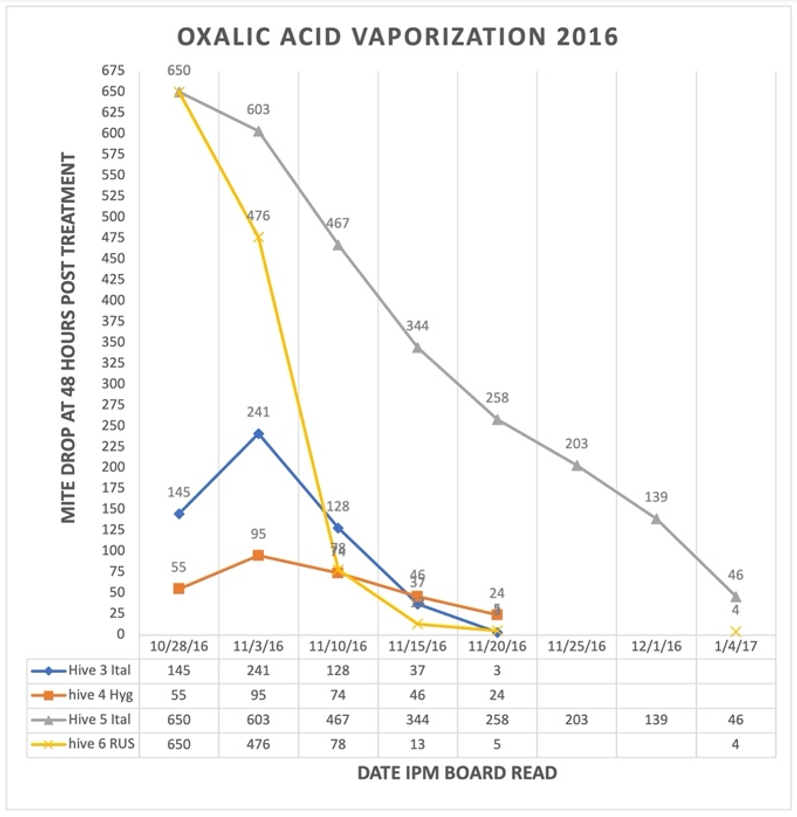
Figure 1. 2016 Mite drop at 48 hours post-OAV Treatment vs. Time
The first in this series of beehives treated in 2016 with oxalic acid vapor kill Varroa destructor. Treatments are spaced five days apart and show a decrease in mite drop over time to a stopping point. Hive #5 required multiple treatments to approach zero.
Some hives differ in brood population dynamics over others in the apiary and Figure 1 is a good example of hive variability in 2016. The initial treatment resulted in a high mite drop which decreased over time with five treatments. Hive #5, a robust and populated colony, required a total of eight OAV treatments to bring the mite levels to an endpoint. The other hives responded well after only five treatments when their numbers approached zero. The last treatment on January 4th confirmed the effectiveness of this method; all hives survived the Winter.
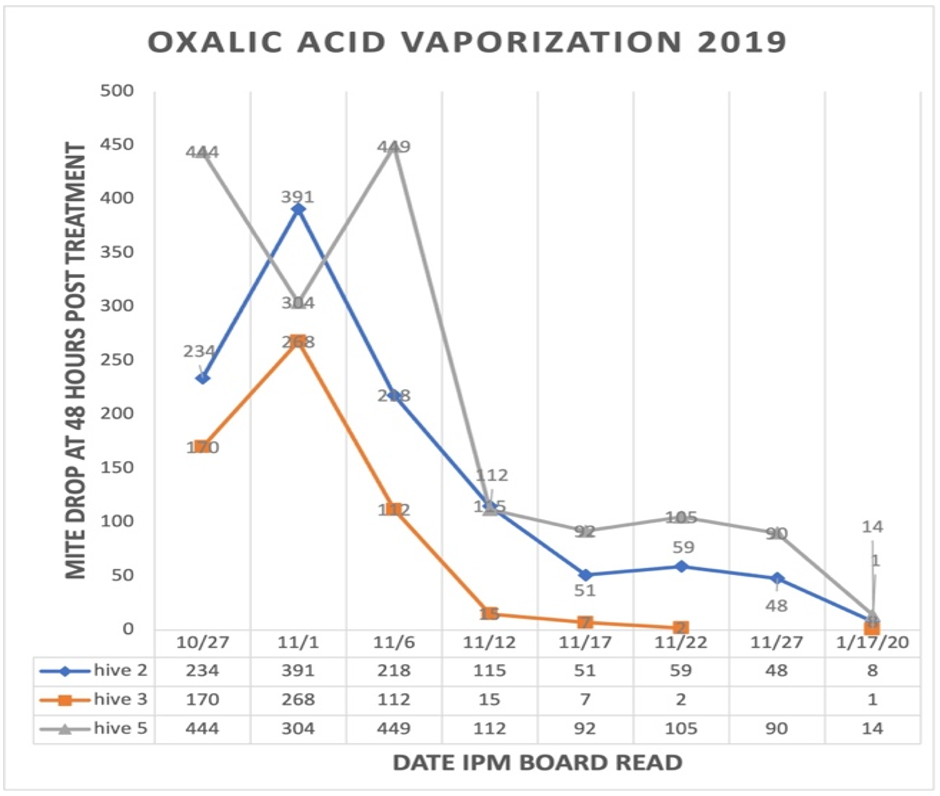
Figure 4. 2019 Mite drop at 48 hours post-OAV Treatment vs. Time
Mite treatment started in late October 2019 and were spaced five days apart over seven treatments. A treatment in January confirmed the effectiveness of end-point monitoring.
A warm Autumn is a concern when the bees are still active. In 2019, the Fall treatment had to begin in October, as shown in Figure 4. There is a direct correlation between mite load and warmer temperatures as seen with climate change (Smolinski, et al., 2021). The presence of brood prolonged the treatment window in some hives and required as many as seven treatments, but one colony required six. I relied on the visual cues from the graphs to continue to treat. A final treatment in January confirmed the benefits of this technique with diminishing mite levels so all hives survive the Winter.
I was concerned that repeated OAV treatments could harm worker bees, but numerous studies have concluded that OAV is safe for bees for serial treatments. OAV treated hives have a lower mite load going into Winter and have more brood in the Spring (Toufailia, et al., 2015).
When colony dynamics and seasonal influences come together, the general treatment picture as shown in figures 2, 3, 6 – is what you want to see – one general knockdown of the phoretic mites with a gradual decrease in the dead mite drop. A smooth curve approaching zero is the ideal treatment scenario. The anticipated decrease in mite population over multiple treatments is an encouraging sign that this technique is effective in producing an exceptionally low mite load.
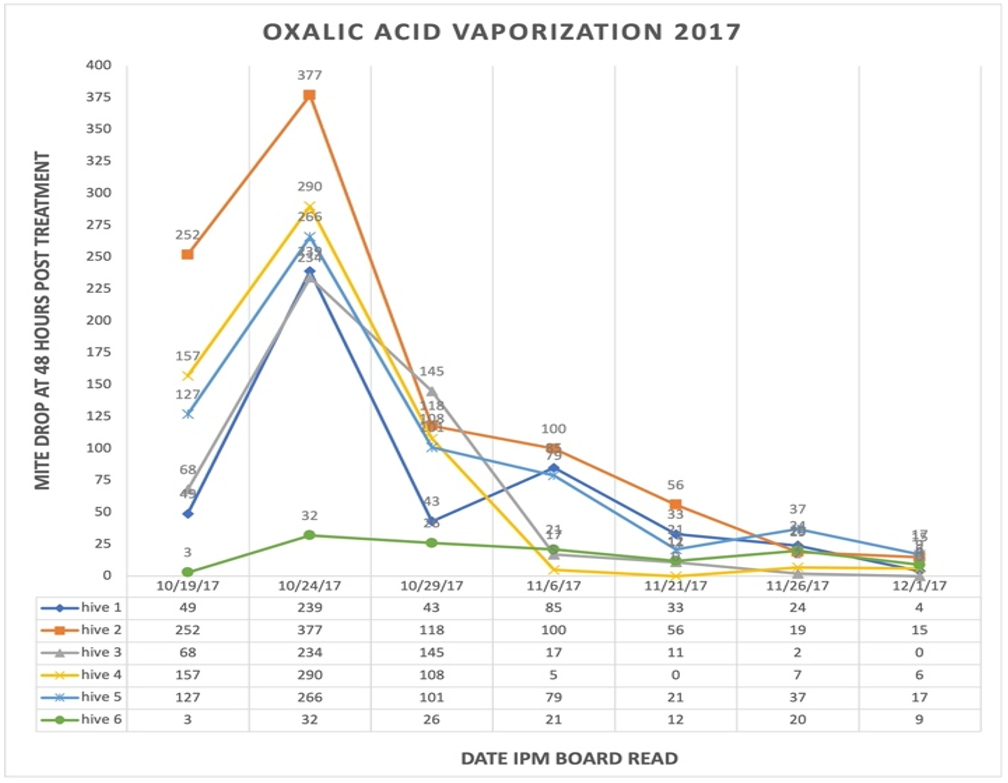
Figure 2. 2017 Mite drop at 48 hours post-OAV Treatment vs. Time
OAV treatments were spaced five days apart over the course of seven treatments in 2017. All six colonies responded well to the OAV and confirmed the effectiveness of end-point monitoring.
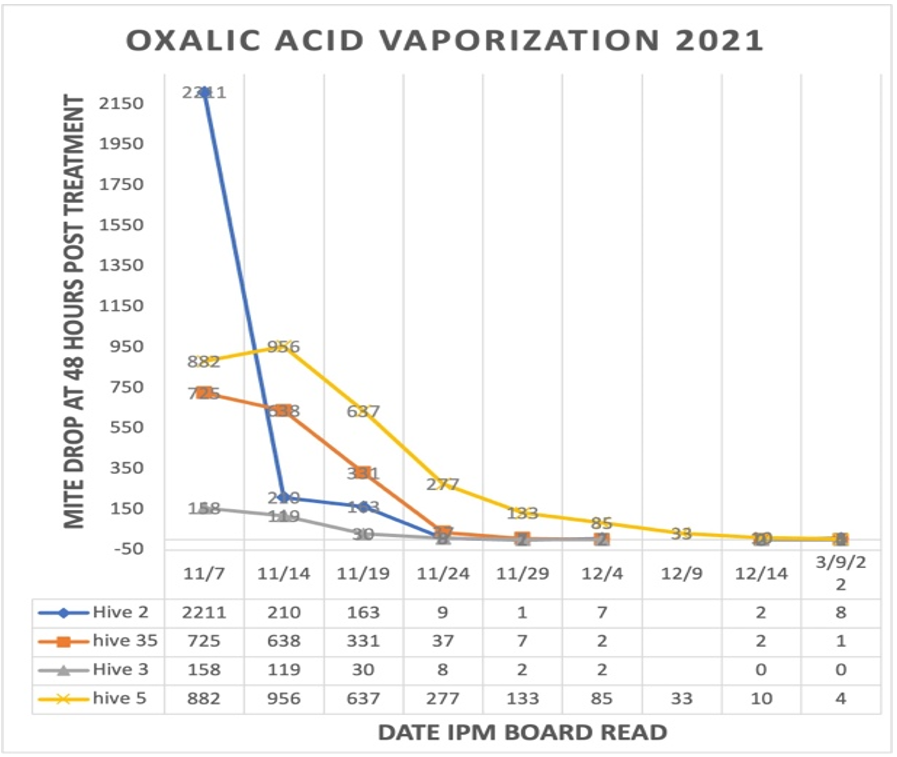
Figure 6. 2021 Mite drop at 48 hours post-OAV Treatment vs. Time
Fall mite treatment started in November 2021 was spaced five days apart over six treatments to bring the mite drops to an acceptable level. Mite drops started remarkably high but dropped rapidly. The presence of brood prolonged the treatment window. A treatment in March confirmed the effectiveness of this technique through the nectar flow. The ability to visually gauge the effectiveness of OAV treatments is the key to Winter survival.
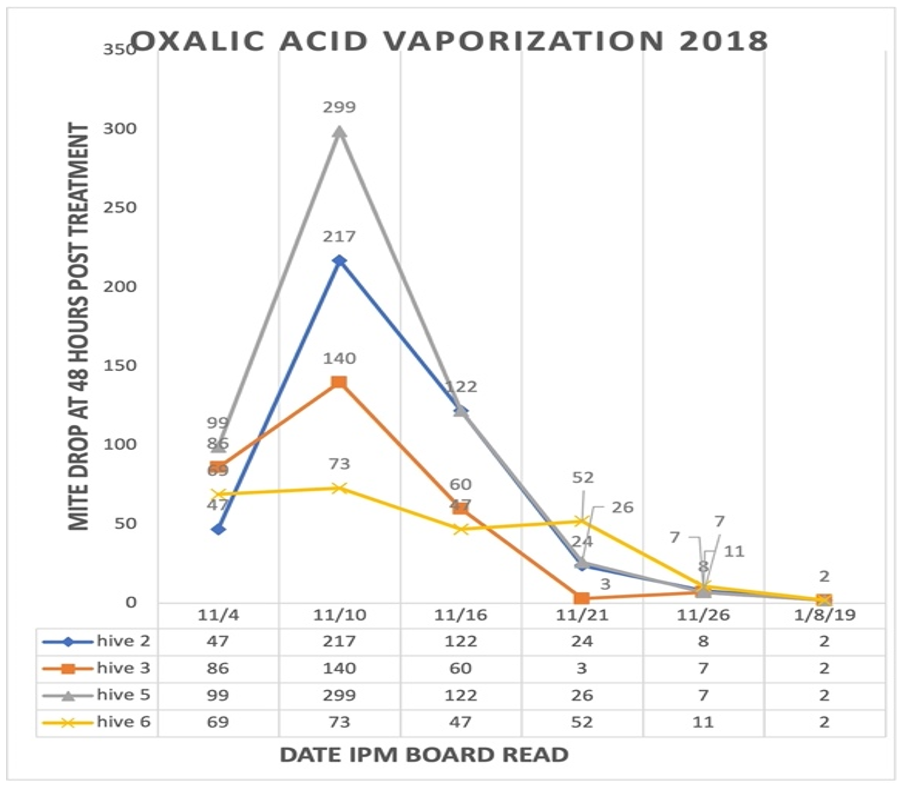
Figure 3. 2018 Mite drop at 48 hours post-OAV Treatment vs. Time
Varroa mite treatments started in early November of 2018. They were spaced six days apart over six treatments until the drop approached zero. A treatment in January confirmed the effectiveness of end-point monitoring.
OAV treatments were spaced five days apart over the course of seven treatments in 2017. All six colonies responded well to the OAV and confirmed the effectiveness of end-point monitoring.
Oxalic acid vaporization is a treatment of choice for eliminating the varroa mite in the late Fall/Winter when colonies have the least amount of brood. Treating an apiary every five days to catch gravid female mites in the open before they can hide in capped cells is a successful strategy where endpoint monitoring is employed. Multiple treatments with OAV are necessary to control varroa mites and have the desired effect of killing mites while not harming the bees (Ratnieks, et al., 2016).
Endpoint monitoring involves the prepping of the hives, sticky boards, counting dead mites and populating an Excel sheet to create graphs. It is a repetitive process, but worth the effort. On the other hand, if endpoint monitoring is not employed the effectiveness of each treatment and current mite load are unknown. Endpoint monitoring affords the beekeeper visual cues in picture form to ascertain the apiary’s mite load status and provides analytical data to determine when to stop treating. I began using this method in 2014 and all hives that entered the Fall healthy, survived Winter with zero hive losses. Endpoint monitoring ensures near-zero mite load in late Fall and the best chance for bee colonies to survive the Winter. The benefit to beekeepers of endpoint monitoring will dispel the notion of acceptable Winter losses and have a 99% Winter survival rate of their colonies.
References
Nazzi, F. & Le Conte, Y. (2016). Ecology of Varroa destructor, the Major Ectoparasite of the Western Honey bee, Apis mellifera. Annual Review of Entomology, 61(1), 417–432. https://doi.org/10.1146/annurev-ento-010715-023731
Papezikova, I., Palikova, M., Kremserova, S., Zachova, A., Peterova, H., Babak, V., & Navratil, S. (2017). Effect of oxalic acid on the mite Varroa destructor and its host the honey bee Apis mellifera. Journal of Apicultural Research, 56(4), 400–408. https://doi.org/10.1080/00218839.2017.1327937
Ratnieks, F., Scandian, L., & Toufailia, H. A. (2016). The best way to kill varroa with oxalic acid: SUBLIMATION. Bee Culture, 144(3), 35-40, 42.
Smolinski, S., Langowska, A., & Glazaczow, A. (2021). Raised seasonal temperatures reinforce Autumn Varroa destructor infestation in honey bee colonies. Scientific Reports, 11(1), https://doi.org/10.1038/s41598-021-01369-1
Toufailia, H. A., Scandian, L., & Ratnieks, F. (2015). Towards integrated control of varroa: 2) comparing application methods and doses of oxalic acid on the mortality of phoretic Varroa destructor mites and their honey bee hosts. Journal of Apicultural Research, 54(2), 108–120. https://doi.org/10.1080/00218839.2015.1106777
Toufailia, H.A., & Ratnieks, F. (2018). Towards integrated control of varroa: 5) monitoring honey bee brood rearing in winter, and the proportion of varroa in small patches of sealed brood cells. Journal of Apicultural Research, 57(3), 444–451. https://doi.org/10.1080/00218839.2018.1460907
Van der Steen, J. & Vejsnæs, F. (2021). Varroa Control: A brief overview of available methods, Bee World, 98(2), 50-56, DOI: 10.1080/0005772X.2021.1896196
Author Bio
Vincent Penoso, a retired health care professional, lives in Alexandria, VA where he has kept bees since 2013. Chinquapin Honey, LLC provides a seasonal supply of honey for the community. Vincent recently completed the Master Beekeeping program at the University of Montana, his alma mater, where he earned two science degrees.








